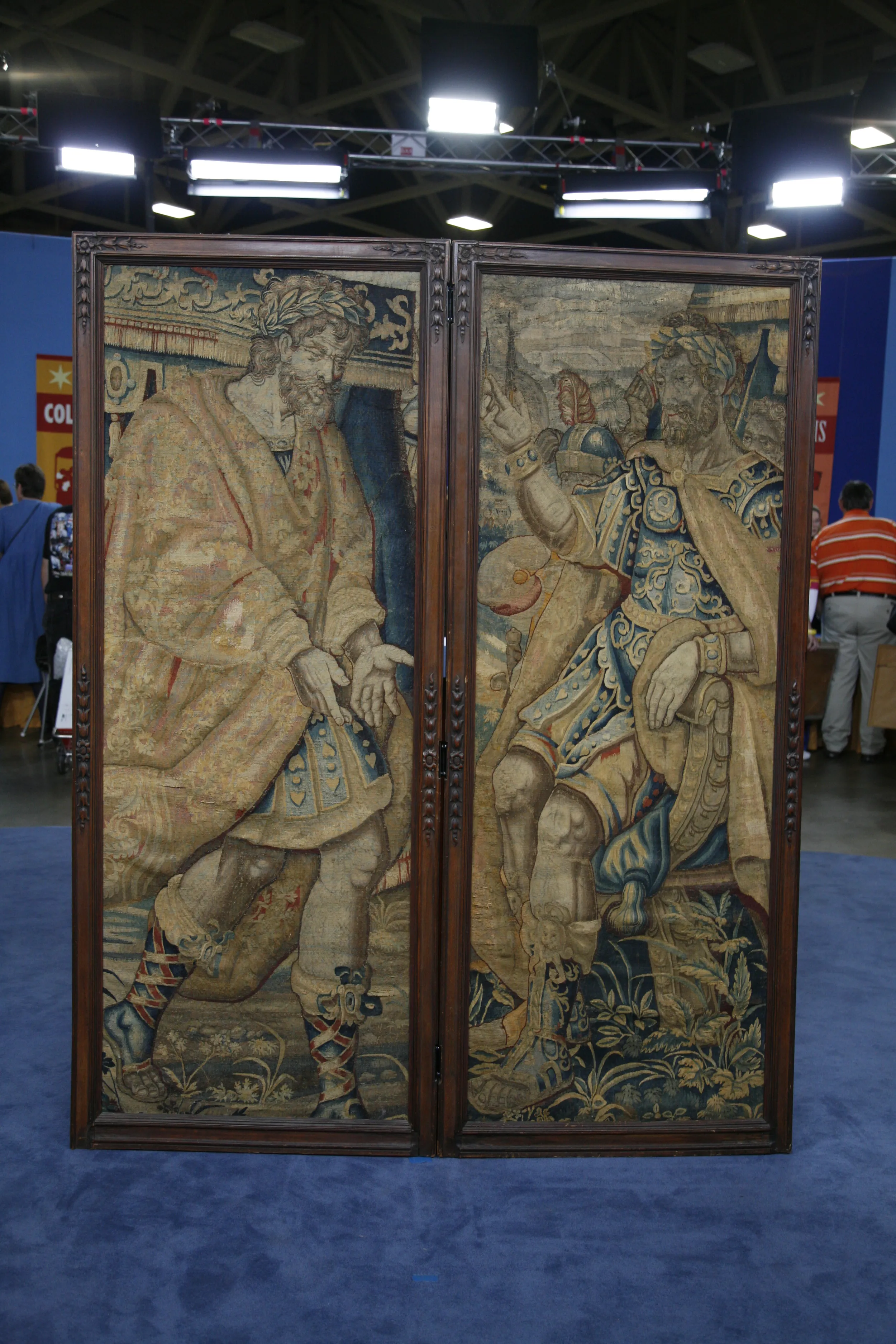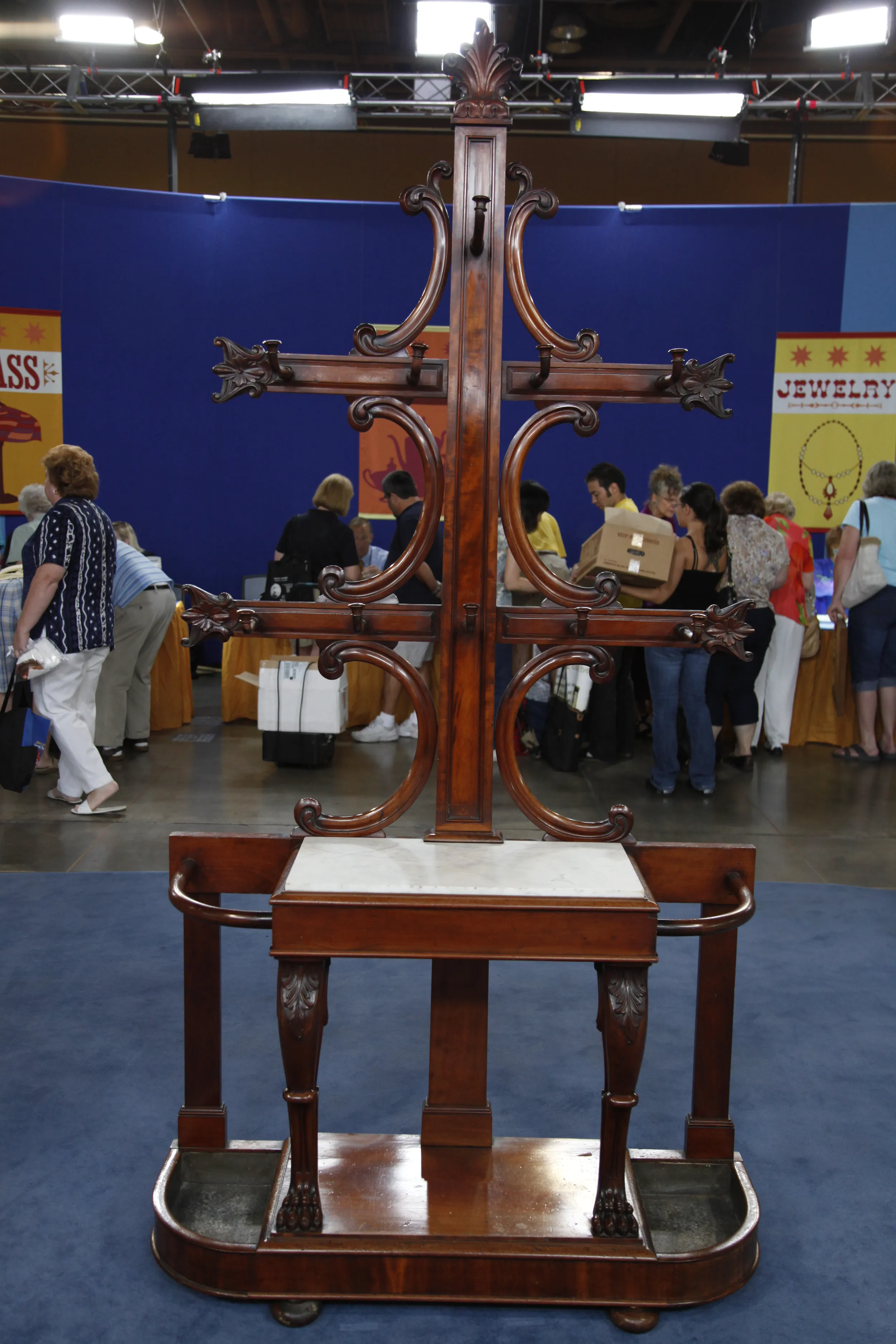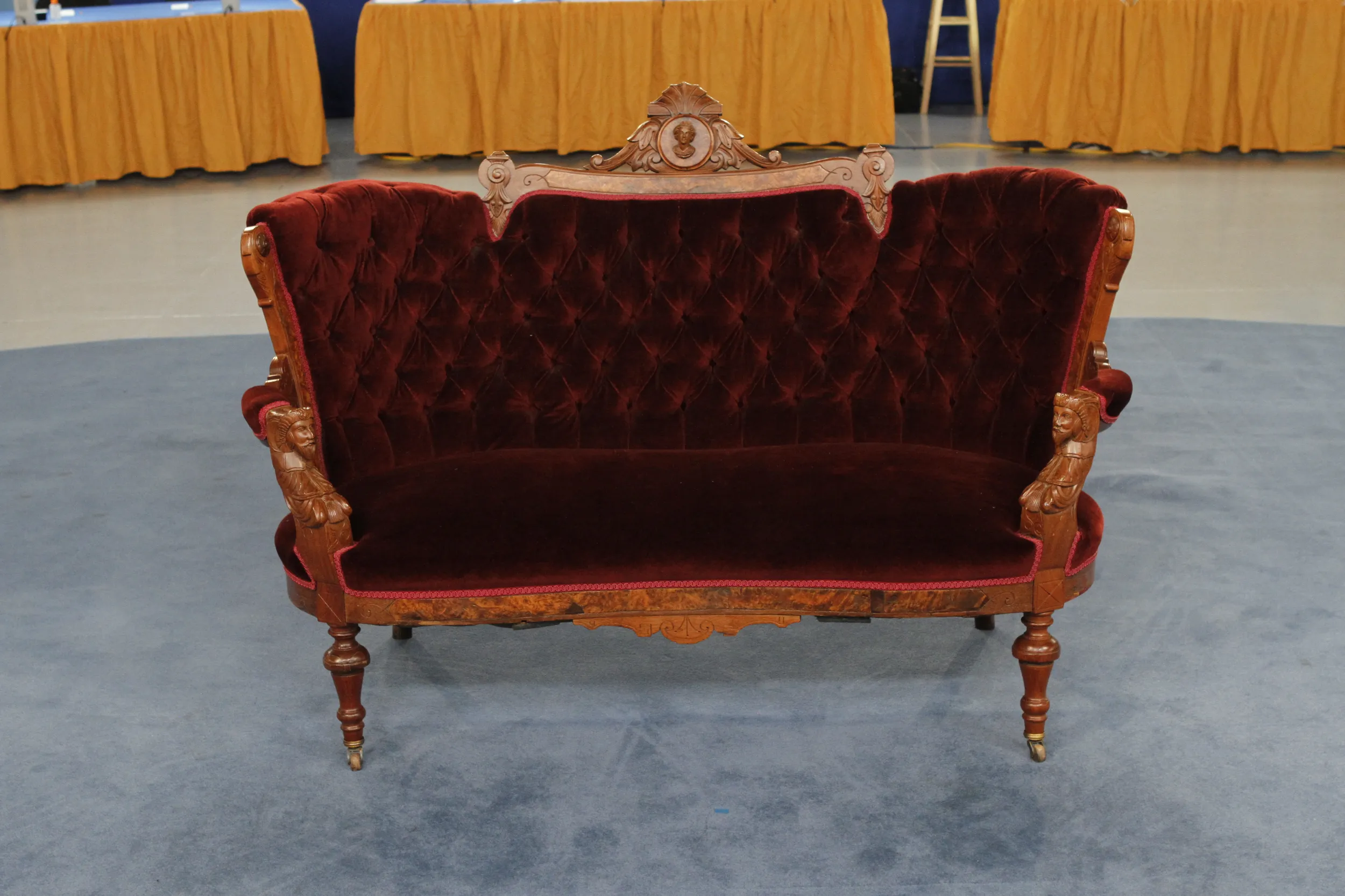GUEST: This cellarette came from my great-great-great- grandfather's sister. It was her family. We can trace them as far back as the late 1700s to early 1800s.
APPRAISER: And where did they live?
GUEST: They lived in northeastern North Carolina, around the Windsor area.
APPRAISER: And this was a plantation.
GUEST: It was a series of plantations, and it still is in one of the original houses of the family.
APPRAISER: There are a number of names that were applied to these. Bottle case is the one that's most preferred in the museum world. But in England they sometimes call them a temporary cellar, because they could move around, hence the name cellarette, which comes from that. That is a supportable spirits case. They turn up in the Tidewater area of Virginia, and then in this northeastern corner of North Carolina. We think that it has a lot to do with the hospitality of this region. It's been said by food historians that strong drink was particularly popular amongst these plantation folk, hence this sort of portable bottle case that they would take around. This one is very good on two counts. One is it's vertical. It has a marvelous, prim, standup aspect to it, with particularly very good inlay. It's suffered a hard life. We notice up here on the top that there are some burn marks from, probably, hot pans. But it's unlike some that I've seen that have handles on both sides, carrying handles where these could be carried down to the cellar to fill. It is made of black walnut, except we found that it does have a mahogany veneer here on the front. And we found that the secondary wood is tulip poplar, a very good indication of a Southern origin. Many of them have a drawer here, but this one only has a slider, which pulls out, with stops on it, for filling glasses and the like. And many of them have square Marlborough legs, but this one has tapering Hepplewhite legs with very nice decorative inlay. We think it dates from around 1800, give or take ten years. Have you ever had it appraised or...
GUEST: To my knowledge it has never been appraised. My grandmother has some news articles of one similar to this selling for $4,000 to $5,000. But the newspaper may be from 20 years ago. I'm not sure.
APPRAISER: Mm-hmm.
GUEST: But I've never seen one that looked... they were always much nicer than ours.
APPRAISER: Well, this is a very nice one, we feel. And at auction today I think that this could bring $30,000-$50,000.
GUEST: Wow.
APPRAISER: It's a high quality piece of cabinetwork. It shows the adept hand of a very talented artisan.
GUEST: That's really fantastic.







